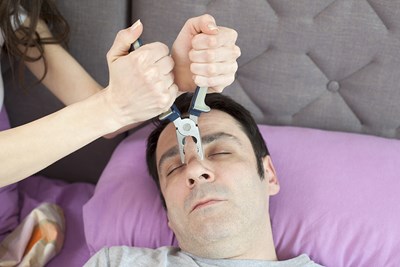A major cause of snoring is the tissues and muscles in the throat and mouth (specifically the tongue and soft palate). During sleep, these tissues relax to such an extent that the force of gravity essentially pulls them into the airway. This makes the airway smaller, but the same amount of air is still flowing. Because your breath moves in the same amount at the same speed, the smaller airway increases the intensity with which it flows. This causes vibrations, which make the sound of snoring.
Anatomical differences in the throat and oral region are major contributing factors. The uvula at the back of the soft palate may be elongated, or the soft palate itself can be lower and thicker than normal. Enlarged tonsils and adenoids or a deviated septum (the thin separation between nostrils is off center) can also contribute to snoring.
If your snoring is especially virulent, your medical team may recommend surgery if all other resources are exhausted. One type of traditional surgery is uvulopalatopharyngoplasty (UPPP). Any excess tissue in the throat region is tightened up and whittled down to help keep airways open when the muscles relax. It may also be performed with a laser (LAUPPP), the uvula is shortened and the soft palate pruned to the same effect. It can take more than one attempt to achieve the desired results of decreased vibrations and increased airway space.
Other more invasive methods of controlling snoring include palatal implants (the implantation of braided polyester filament into the soft palate to make it firmer) and somnoplasty (low-intensity radio-frequencies are directed at the soft palate to shrink tissue, rather than removing it). However, both of these are still being studied for efficacy and safety. Thus far, the somnoplasty has been one of the least painful procedures.
Have more questions? See more answers from Alot.




